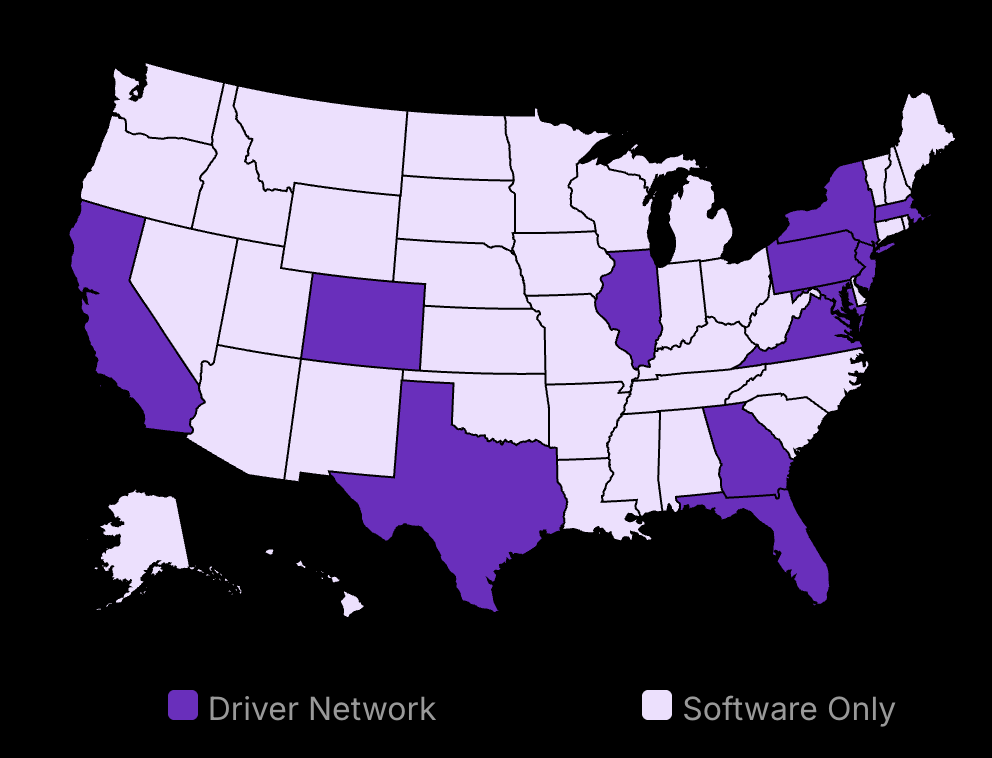Most business owners get branding completely wrong in 2025. They think it’s just about logos, abstract logos, brand colors, and catchy slogans.
The Truth Hits Harder: 89% of customers stay loyal to brands that share their values, according to the 2025 Brand Trust Report.
Let’s be clear: Branding guidelines and a strong brand style guide are the DNA of your company. It’s what makes Apple charge $1,499 for a phone—and have existing customers line up to buy it. It’s why Nike can sell $200 sneakers while other brands with identical products sit on shelves at $50.
The rules of branding changed dramatically in 2025. Social media algorithms now favor authenticity over perfection. Customers demand transparency more than ever. Small businesses compete with global giants—and sometimes win—by focusing on brand assets and a compelling brand story.
Here’s what matters now: Your own brand is what people say about your business when you’re not in the room. It’s the gut feeling they get when they see your company’s products. It’s the story they tell their friends.
The benefits of strong brand marketing go beyond advertising. They impact your bottom line by helping you increase brand awareness, attract loyal customers, and build credibility in the same industry.
Revenue Potential: Companies with consistent branding see a 23% increase in revenue.
This guide breaks down the essential elements of building a brand. You’ll learn exactly how successful companies brand their business, outshine competitors by researching competitors, and create lasting customer relationships. We’ll examine real examples, practical strategies, and the latest trends that matter in today’s market.
The question isn’t whether you need branding—it’s whether your branding efforts are working hard enough for your business.

Save 80% of delivery management time
We handle everything:
- Dedicated operations manager
- Real-time tracking dashboard
- Automated customer notifications
- Urgent issue resolution
What is Business Branding?
Branding shapes how customers see a business.
Sets a business apart from the crowd.
Examples of Successful Brand Building
Apple and Nike are leaders in branding. Apple stands out by offering a consistent look and feel. Their products are not just gadgets but symbols of style and simplicity. Apple’s clean design and high-quality products build a premium image.
Nike, on the other hand, connects with emotions. Their branding isn’t just about shoes and clothes. It’s about inspiring people to find their inner athletes. “Just Do It” isn’t just a slogan. It’s a call to action. Nike uses strong imagery and stories of athletes, which makes customers feel part of something bigger.
Both brands succeed in creating strong identities. They go beyond products and services, venturing into experiences and emotions. Other businesses can learn from these giants. It’s about crafting a story people connect with.
Types of Business Branding
Personal Branding
Personal branding focuses on an individual’s reputation. Entrepreneurs and freelancers use it to showcase their skills and personality. It’s how they let their true self shine in the business world.
Think of a consultant building a LinkedIn profile. They’re not just sharing what they do, but why they stand out. It involves consistent messaging and showing expertise. They share stories, insights, and achievements to build credibility.
For entrepreneurs, personal branding can make or break opportunities. Since trust is vital, their brand must reflect honesty and professionalism. It’s about having a clear and strong reputation.
Corporate Branding
Corporate branding covers an entire company. It includes everything from core values to customer service. This is crucial for companies wanting to leave a lasting mark.
Take a big company like Coca-Cola. Their brand is not just about selling beverages. It’s about a feeling of happiness and memories shared over a Coke. It builds on history and shared experiences.
Corporate branding challenges companies to stay true to their mission. It involves crafting messages that align with values and the promises made to customers. Consistency is key, as it enhances recognition and builds loyalty. This strategy is more than just visual elements; it’s about crafting a trustworthy company narrative.
Why is Branding Important?
Branding is a big deal in business. Without it, a company is just another name. Branding creates a story that resonates with people. Good branding can make or break success. As we dive deeper into understanding branding, it’s essential to consider how to effectively align your brand identity logo with your core values. A well-aligned brand identity not only helps in creating a recognizable image but also fosters trust and loyalty among consumers. For insights on this crucial aspect of branding, check out this article on how to integrate your branding elements meaningfully into your business strategy.
Brand Trust: 81% customers use brand trust to decide if they want to buy. If they trust, they stay loyal and even spread the word.
Branding has three main purposes: stand out, ensure recognition, and build relationships. Without branding, a company struggles in these areas. Brands competing in the digital world face similar challenges. Companies often debate which methods work best. Custom crafting messages for target groups often wins. One effective approach to enhance your branding efforts is by focusing on innovative promotional strategies. These tactics are vital for making a mark in the competitive landscape of 2025. For a detailed guide on the best branding promotion strategies that can significantly boost sales, check out our insights on top branding promotion strategies that can elevate your business.
Branding plays a role in business success. It helps customers remember a company. Consistent branding increases sales up to 23%, highlighting its power. People quickly identify the product or service, adding to their reasons to buy. It’s not just about a pretty logo. It’s about shaping a perception that sticks and counts.
Branding is about long-term strategy. Companies continually invest in brand value, leading to steady growth. A strong brand is a strong business.
Benefits of a Strong Brand Voice and Brand Promise
Builds trust and credibility with customers.
Enhances recognition and identity.
Drives customer loyalty and repeat business.
1. Establishes Trust
Trust is the backbone of any successful business relationship. For consumers, trusting a brand is a critical factor before considering a purchase. Why is trust so important? Because it directly impacts a customer’s decision to invest in a brand or walk away. When a brand consistently delivers on its promises, it not only meets customer expectations but also enhances the brand’s credibility. Trust isn’t built overnight; it involves a continuous effort to convey transparency, reliability, and authenticity in every interaction with customers.
A trusted brand resonates with customers, making them more likely to return and recommend it to others. This trust translates not just into sales but also into long-term loyalty. As the business world becomes increasingly competitive, having a trustworthy brand becomes a key differentiator. It is not just about avoiding scandals or mishaps; it is about consistently proving that the brand stands by its values. Customers notice. They value brands that are as reliable as a good friend.
2. Increases Recognition
A recognizable brand is a powerful asset. It’s the reason why consumers can identify brands simply by their logos. In many ways, logos are the face of a brand. They offer an immediate connection and familiarity that resonates with customers. Beyond just logos, consistent brand messaging across different channels is essential.
But why is recognition so significant? It goes beyond aesthetics. A brand that is easily recognized stands out in a crowded marketplace. It assures customers that they are purchasing from a known entity, reducing the perceived risk. Recognition builds a mental shortcut for consumers, streamlining the decision-making process. They know what to expect, making them more inclined to prefer this brand over others. In today’s information-overloaded society, making your brand easy to remember can be invaluable.
3. Builds Customer Loyalty
A strong brand does more than attract customers; it retains them. This retention is built on a foundation of loyalty. Loyalty stems from a deep emotional connection between the customer and the brand.
Emotional Branding: Emotional branding fosters strong consumer loyalty, as 72% of global consumers feel loyal to at least one brand, and 94% would recommend a brand they feel emotionally connected to.
Loyalty is nurtured through consistent positive experiences. This includes everything from product quality to customer service. When brands consistently offer value and memorable experiences, they create repeat customers. Loyal customers are less sensitive to changes in price and more likely to forgive mistakes. This loyalty extends beyond purchases—they often act as brand evangelists, spreading word-of-mouth recommendations. In a landscape where switching providers is just a click away, customer loyalty is gold.
Loyalty Programs Drive Sales: Loyalty programs can increase revenue by 12% to 18%, with top-performing programs boosting revenue by 15% to 25% annually.
4. Differentiates from Competitors
What sets your brand apart? In saturated markets, differentiation is key to survival. Successful branding creates a unique identity that competitors cannot easily imitate. This identity is crafted through a distinctive mixture of design, messaging, and customer experience. The goal is to occupy a specific niche in the consumer’s mind, making it distinctly yours. It is not just about looking different; it’s about resonating in a way that speaks directly to your ideal audience.
Books like “Building a StoryBrand” by Donald Miller offer insights into aligning your brand’s narrative with your customer’s journey. These strategies often pivot around delivering unique value propositions that competitors cannot match. By focusing on differentiation, brands create a recognizable and valuable presence, ensuring they are the first choice for their target market. It’s about standing out and making a lasting impression, pushing mediocrity aside.
5. Drives Financial Performance
Finally, branding impacts the bottom line. Consistent branding not only drives customer preference but also directly correlates to financial success. For example, using a signature color palette consistently can increase brand recognition, which eventually enhances sales performance. Why? A strong brand presence leads to increased consumer confidence and higher perceived value, making customers more willing to pay premium prices.
Signature Colour Impact: According to research, consistent use of a signature color palette can boost brand recognition by up to 80%.
Investing in branding isn’t just a marketing decision; it’s a financial strategy. Even experts like Steve Forbes highlight its importance as “the single most important investment you can make in your business.” Brands that consistently deliver on their promises craft a legacy, allowing them to remain competitive and profitable. By aligning branding with business strategies, companies can ensure sustained growth and long-term success.
How does Business Branding Work?
Continuous strategy and execution drive brand success.
Visuals and communication are at the heart of branding.
Understanding the process is key to effective brand management.
Strategy and Execution: The Branding Framework
Branding isn’t a single action. It’s a continuous process that starts with strategy and execution. Successful branding starts with understanding the company’s mission, values, and objectives. This strategic foundation sets the stage for all branding activities.
Strategic branding requires asking the right questions. What does the brand stand for? What problems does it solve for customers? These questions guide the creation of a brand narrative that aligns with the goals of the business. Books like Building a StoryBrand by Donald Miller provide insights into crafting narratives that connect with audiences.
Execution involves translating strategy into action. It’s pointless to create a strategy without the right execution plan. Companies like Lego and IBM have thrived by effectively executing brand strategies that resonate consistently across all channels. Brand execution involves creating diverse touchpoints that align with the strategic narrative to ensure a cohesive brand identity.
Designing Visual Elements
Designing visual elements is a crucial part of branding. Logos, color palettes, and typography form the visual identity of a brand. Once these core elements are defined, they must be applied consistently across all marketing materials.
Visual identity needs to be designed with purpose. A brand’s visuals should convey its mission and values at a glance. A book that delves into visual branding concepts is Logo Design Love by David Airey. This resource covers important principles for creating impactful visual identities.
Consistency in visual branding helps reinforce brand recognition. Logos and colors are familiar cues for consumers, creating emotional links and trust. While branding is visually expressive, the connection it builds in the mind is invaluable.
Marketing Communication
Once the foundation and visual elements are set, marketing communication comes into play. This involves crafting and delivering messages that support the brand’s identity and value proposition. Effective communication strategies engage customers and help solidify brand recognition.
Communication must be consistent, yet adaptable. This requires continual evaluation and refinement. Using powerful storytelling, companies can emotionally engage consumers. The emotional aspect of branding cannot be overstated, as Sir Richard Branson says, “Branding demands commitment; commitment to continual reinvention.”
Emotional Connections: 64% of women and 68% of men feel an emotional connection with brands, which influences their purchasing decisions.
Books like Made to Stick by Chip Heath and Dan Heath provide a deeper understanding of how to craft messages that make a lasting impact. Regularly updating brand messaging to reflect current trends and market needs keeps brands relevant.
Internal Alignment
Internal alignment means ensuring everyone within an organization understands and communicates the brand’s values and mission. This is crucial for maintaining a unified brand message across all interactions with customers.
Employees are the face of a brand. Their words, actions, and interactions play a huge part in the customer’s perception of the brand. Companies like Zappos are known for their strong internal branding. They emphasize company culture as a part of their branding strategy.
Creating internal alignment helps in converting employees into brand ambassadors. It also ensures consistency in brand delivery. Geoffrey James’s Business Without the Bullsht* offers insights into achieving strong internal communication.
Continuous Monitoring and Evaluation
Branding doesn’t stop once everything’s in place. Continuous monitoring and evaluation measure the effectiveness of branding efforts and help make necessary adjustments. Metrics such as brand awareness, customer loyalty, and market positioning are common indicators.
Tools like Net Promoter Score (NPS) help measure customer satisfaction and loyalty. Regular brand audits ensure alignment with consumer expectations and market trends. Reviewing books like Building Strong Brands by David A. Aaker can enhance your understanding of brand evaluation processes.
Ongoing evaluation secures continued brand relevance, capturing new audiences while maintaining existing ones. As brands evolve, they must adapt their strategies and, when needed, reassess their brand identity to keep pace with changing market dynamics.
Future Trends in Business Branding
Sustainability and tech will dominate branding.
Explores how eco-focus and AI influence branding.
Sustainability in Branding
Eco-friendly practices aren’t just a trend; they are a demand. Customers now look at a company’s environmental record before buying. They want brands that share their values.
Sustainablity Effect: 77% of consumers track a company’s environmental record before buying, and brands seen as "sustainable" move their products 2.7 times faster.
The benefits of focusing on sustainability include stronger customer trust and faster market reach. Businesses can gain an edge by embracing eco-friendly operations. However, jumping on this trend without real commitment can backfire. Misleading claims might damage a brand’s reputation, leading to the term “greenwashing.”
Tech Integration: AI and Beyond
The integration of AI in branding is reshaping the landscape. Brands use AI for personalized experiences, which enhance customer satisfaction. This trend is not just about adopting technology; it’s about using it to better reach and connect with audiences.
Brands utilizing AI can expect to improve efficiency and create targeted, engaging content. But tech might also alienate consumers who fear losing personal interaction. Finding the right balance is crucial.
Purpose-Driven Branding
A brand with a clear personal identity gains more trust. Those focusing heavily on ESG (Environmental, Social, Governance) enjoy repeat sales rates. This approach aligns brand purpose with customer values, creating strong connections.
However, this strategy requires authenticity. Artificial attempts can disillusion customers. Brands must ensure their actions match their stated values to avoid criticism.
Innovative Branding Strategies for Success
Stay ahead with creative branding tactics.
Engage customers with storytelling.
Leverage these methods for consistent success.
Crafting a Unique Narrative
Storytelling can help a business create a unique brand narrative. This isn’t just sharing facts. It’s about connecting on an emotional level. A well-crafted story helps customers relate to a brand’s mission and values. This connection fosters brand loyalty and customer retention.
Storytelling Advantage: A study from Stanford University found that stories are up to 22 times more memorable than facts alone.
When crafting narratives, businesses should focus on authenticity. Customers are wary of marketing ploys. Genuine and transparent stories build trust. ‘Start with Why’ by Simon Sinek is a recommended read for understanding purpose-driven storytelling. If authenticity is compromised, the audience might perceive this negatively, affecting the brand’s image.
Books like ‘Contagious: How to Build Word of Mouth in the Digital Age’ by Jonah Berger can provide further insights. They emphasize the importance of emotional appeal and how these stories should be shared across multiple channels to strengthen brand consistency.
Engaging through Personalization
Personalization is a compelling strategy for connecting with consumers. By tailoring messages to specific audience segments, businesses can make customers feel valued. This approach increases engagement, as it aligns with customer preferences.
Yet, there’s a balance to be struck. Over-personalization might feel intrusive. It’s crucial to respect privacy while using data insights. ‘The Power of Moments’ by Chip and Dan Heath teaches how personal experiences shape customers’ perceptions.
Debates around data use and privacy are happening. Tools that respect privacy, like Google’s Privacy Sandbox, are evolving. For businesses, staying updated with these changes is vital to maintain ethical standards while leveraging personalization.
Multi-Channel Integration
A successful branding strategy leverages multiple channels. This isn’t only about being present everywhere, but ensuring a cohesive message across them. Each platform should echo the brand’s core message and values.
Multi-Channel Campaigns: Omnisend’s research highlights that businesses using three or more channels in their campaigns experience a 287% higher purchase rate compared to single-channel campaigns.
Books like ‘Marketing 4.0’ by Philip Kotler offer a deep dive into the tactics of multi-channel integration. They shed light on new-age consumer pathways and how to keep them engaged. However, consistent messaging is key. Inconsistent messages confuse consumers and dilute the brand’s identity.
Specialized tools like Hootsuite or Sprout Social help manage and automate cross-platform campaigns. However, over-reliance might degrade personal touch. It’s essential to maintain a balance between automation and genuine human interaction.
Building Strong Customer Relationships
Fostering strong relationships is critical for a brand’s success. This can be achieved through regular engagement and valuing customer feedback. Responding to customer queries actively positions brands as attentive and caring.
On the flip side, ignoring customer feedback can damage a brand’s reputation. Brands should treat each interaction as an opportunity to improve. ‘Never Lose a Customer Again’ by Joey Coleman is an insightful resource that details how strong relationships can transform business-customer dynamics.
Forums, reviews, and social media are great platforms to gather insights. Leveraging CRM tools like Salesforce helps streamline this process but should complement a human touch. The balance between technology and personal interaction remains pivotal.
Fostering Creativity for Continued Innovation
Innovation is integral to a brand’s long-term success. It involves staying ahead of trends, encouraging creative risks, and constantly improving strategies. Successful brands like Tesla continuously innovate, ensuring they remain at the forefront of their industries.
Encouraging a culture of creativity within teams is essential. Empower employees to think outside the box and bring new ideas to the table. ‘Creative Confidence’ by Tom Kelley and David Kelley is a comprehensive read on cultivating innovation-driven workplaces.
Yet, excessive innovation without understanding market needs might lead to failures. It’s important to balance creativity with customer insights. Companies can partner with firms like IDEO for design thinking workshops to blend creativity with customer-centric approaches. Keeping a pulse on customer feedback, market trends, and internal team insights ensures sustained innovation.
Impact of Digital Transformation on Branding
Brands are not the same: they have moved from traditional to digital.
Data, tech, and digital channels play a big role now.
Better consumer insights lead to personalized branding experiences.
Changing Traditional Branding Methods
Digital transformation has turned branding norms on their head. In the past, brands relied heavily on print media, television, and radio. Today, digital tools like social media and content management systems are at the forefront. Before, marketing was largely one-way communication—brands spoke, and customers listened. Now, interaction is two-way. Customers talk back, often loudly, forcing brands to adapt quickly. The massive reach of digital platforms ensures messages travel further than traditional methods ever allowed.
Content Marketing Generates Leads: Content marketing generates 3x more leads than traditional marketing strategies, and 64% of consumers purchase after watching branded videos.
Incorporating these platforms into branding allows for real-time feedback. It presents a chance for brands to tweak messages on the fly. Consider the rise of user-generated content; it’s reshaped brand narratives. Consumers now co-create with brands. Brand strategies have evolved to focus on engagement over dictation. This is a monumental shift. Brands not only talk but also listen and evolve. Books such as “Digital Branding” by Daniel Rowles offer a deep dive into these changes.
The Role of Data in Branding
Data is crucial for modern branding. Today’s brands know their customers better than ever before. With each interaction, data offers a wealth of insights about consumer behavior, preferences, and engagement patterns. Understanding this data allows brands to create tailored experiences that stick. Personalization is at the heart of this transformation. Brands now use data to craft messages that feel personal.
Increased Spending: 67% of loyalty program members spend more to earn rewards.
On the other hand, some argue this may be an overload of personalization, potentially missing broader audience segments. Books like “Competing on Analytics” by Thomas H. Davenport provide robust cases for smart data usage. It’s becoming clear that knowing how to collect and interpret data is as important as the data itself. For brands to thrive, they must align their data strategy with customer-centered goals.
Digital Channels and Branding
Digital channels have transformed the landscape. Social media, search engines, and streaming platforms challenge brands to keep up. The shift in advertising dollars is notable. Companies leverage these platforms for new opportunities, targeting a global audience with precision. According to data, this shift has opened ways to reach audiences at reduced costs compared to traditional approaches.
Think of it this way: a single tweet can potentially reach millions within minutes. This immediacy is powerful. It also holds risks. One misstep can go viral and threaten brand reputation swiftly. Thus, brands are learning to be proactive, constantly monitoring and engaging across platforms. Resources, such as “Social Media ROI” by Olivier Blanchard, provide further insights into effectively using these channels. Digital channels are not just tools but integral parts of branding strategies today.
Emerging Technologies in Branding
New techs like AI, VR, and AR are becoming central to branding strategies. These technologies create interactive experiences that captivate audiences. For example, augmented reality can transform product exploration, making it immersive. Virtual reality offers consumers a taste of the brand environment without stepping outside. Such technologies bridge the physical and digital worlds seamlessly, enriching user experiences.
AI stands out too. Its role in personalization is unparalleled. Yet, caution is advised. Over-reliance on tech without a human touch can alienate customers. Consider studying works like “Human + Machine: Reimagining Work in the Age of AI” by Paul Daugherty and H. James Wilson. These technologies are reshaping how brands build connections, yet require careful balance.
Real-world Examples and Case Studies
Examining how top brands implement digital transformation can be illuminating. The ‘Share a Coke’ campaign seamlessly blended traditional and digital techniques. Coca-Cola engaged users via personalized bottles and invited them to share online. The campaign’s success signifies the power of integrating digital with the traditional.
These examples demonstrate that digital transformation isn’t a single strategy but an evolving process. For those who want to explore further, the book “Branding in the Digital Age” by Allen Adamson offers more detailed exploration. Learning from real-world success stories provides a blueprint for using digital tools effectively.
Building Brand Identity in a Competitive Market
Develop a unique brand identity that stands out.
Emphasize flexibility through ongoing market research.
Create a recognizable and trusted presence.
Crafting a Unique Brand Image
In competitive markets, a brand’s image distinguishes it from others. This isn’t just about logos or taglines, though both are essential parts. It involves a deeper narrative, intertwined with your company’s mission and values. This story forms the foundation and sets the tone for all marketing efforts. Building a strong brand image requires explicit storytelling combined with genuine messaging. Consider “Start with Why” by Simon Sinek. It’s an insightful book that explores the importance of connecting a brand’s values to its customers. If your brand doesn’t truly resonate, it risks being just another option.
There are challenges, though. For instance, the overuse of emotional triggers can sometimes backfire, leading to skepticism. Consumers are now more perceptive, making authenticity a critical component of brand communication. Ask yourself this: How will your brand memory be perceived in five years?
Market Research and Adaptation
Understanding your market is ongoing. This requires continuous research. Dive deeply into consumer trends, competitor activities, and market shifts. For a comprehensive look at consumer behavior, “Predictably Irrational” by Dan Ariely offers a fascinating perspective. His work examines the often illogical decisions consumers make, helping businesses tailor their strategies.
Adaptation is key. Brands that rest on their laurels risk losing relevance. Look at the retail market example of Blockbuster’s decline. They ignored the streaming trend, while Netflix evolved with the market. Regular market analysis helps you anticipate such changes, ensuring you stay proactive rather than reactive. There are merits and pitfalls to consider in being adaptable. While flexibility allows for growth, it can, at extremes, dilute the brand’s core identity. This balance is delicate and requires precision.
Leveraging Technology for Brand Identity
Technology is reshaping how brands communicate. From immersive experiences through VR to personalized interactions with AI, these tools change brand engagement. The book “Hooked” by Nir Eyal dives into the psychology of consumer engagement in the digital age. It’s essential reading for understanding how technology drives behavior, which can be integral for crafting brand strategies.
Yet, the reliance on tech poses risks. Overemphasizing digital interactions can erode the human element of a brand. Consider how incessant automation in customer service can frustrate rather than help. Therefore, striking a balance between technology and human touch is vital. Keep the brand personable and approachable while using advanced tools to enhance, not replace, these connections.
Maintaining Consistency Across Touchpoints
Brand consistency fosters trust. This means all brand interactions, whether social media, in-store experiences, or advertisements, should reflect the same voice and message. “Building A StoryBrand” by Donald Miller is a fantastic resource for maintaining this uniformity across channels. It teaches you to simplify your message so that consumers always know what your brand stands for.
However, achieving this consistency isn’t straightforward. Misalignment across different platforms can confuse consumers. For example, if your social media campaigns focus on affordability but your in-store experience emphasizes luxury, it creates dissonance. Regular audits of all brand touchpoints are vital to align strategies and communications, ensuring harmonious brand awareness and solidifying customer relationships.
Evaluating Brand Performance
Regularly assessing how well your brand resonates is crucial. Use metrics like Net Promoter Score (NPS) or Customer Satisfaction (CSAT) to gauge public perception. Feedback loops, such as surveys or social media polls, can provide valuable insights into consumer thinking. Track these indicators and relate them to your branding efforts. You will find “The Lean Startup” by Eric Ries to be an invaluable guide here. It encourages data-driven decision-making to refine and adjust branding strategies.
But, any evaluation must consider external variables that might cloud interpretation. Market forces or seasonal effects can skew results, leading to misguided conclusions. Understanding these factors requires skill. Look beyond obvious data points to ensure that your assessment reflects genuine consumer sentiment, not just temporary trends. This ongoing analysis is key to strengthening brand identity in ever-evolving markets.
How to Develop a Strong Business Branding
Define your brand’s values and mission.
Create consistent visual elements.
Implement effective branding strategies.
Step 1: Define Your Brand
Clarify Business Values and Mission
The first step in building a strong brand is defining your values and mission. Start by asking yourself: What does your business stand for? What problems are you solving with your product or service? Articulate these values clearly. This is your mission statement. Think of it as the backbone of your brand. It should guide every decision you make. Take some time to review companies that inspire you. Analyze their mission statements. Use them as a reference, but make sure your mission truly reflects your business.
Identify Target Audience
Once you have your mission, identify your target audience. Know who you’re trying to reach. What are their needs, preferences, and challenges? Create a detailed customer profile. Include demographics such as age, gender, and income level. Understand their buying behavior. Use surveys, interviews, and data analysis if possible. The more you know, the better you can tailor your branding efforts. Your audience should guide your messaging, tone, and even your visual identity.
Step 2: Design Visual Elements
Create Logos, Color Schemes, and Typography
Your visual identity is crucial. Start with a logo. It’s the face of your brand. Keep it simple yet memorable. Choose a color scheme that aligns with your brand values. Colors evoke emotions. Be thoughtful with your choices. Next, select typography. This includes font styles and sizes. Make sure it’s easy to read and suitable for your brand’s character. Paul Rand, a renowned designer, once said, “Design is the silent ambassador of your brand.” Ensure each visual element works together seamlessly to represent your brand.
Ensure Consistency Across All Platforms
Consistency is key. Whether it’s your website, social media, or print materials, everything must align visually. This means using the same logo, colors, and fonts everywhere. It builds brand recognition and trust. Create a style guide. This document outlines rules for your visual elements. Share it with your team. Everyone must be on the same page to maintain uniformity. Consistent visuals help customers quickly identify your brand, even among competitors.
Step 3: Implement Branding Strategies
Integrate Branding into Marketing Campaigns
Now, it’s time to introduce your brand to the world. Integrate your branding into marketing campaigns. This includes advertisements, content creation, and customer communications. Make sure your brand’s voice is present in every aspect. Whether it’s a promotional email or a social media post, the tone should reflect your brand’s personality. Engage with your audience through personalized messages. Effective campaigns increase your brand’s reach and influence.
Measure Effectiveness and Adapt as Needed
Always measure your branding efforts. Use metrics like social media engagement, website traffic, and sales figures. Understand what works and what doesn’t. Jeff Bezos once mentioned, “Your brand is what other people say about you when you’re not in the room.” Collect feedback from customers. Analyze it and be willing to make changes. Adapt your strategies as necessary. The market and consumer preferences change; your branding should too.
Strategies for Engaging Branding
Storytelling: Connect Emotionally with Your Audience
Stories matter. Weave them into your brand. Relate your brand back to real experiences. This builds an emotional connection. Share stories about your brand’s journey, challenges, and successes. Make it authentic. Customers will relate to genuine stories more than polished marketing lines. An authentic narrative turns mere buyers into loyal advocates.
Customer Engagement: Foster Relationships through Social Media
Use social media to build relationships. Engage customers directly. Respond to comments. Share updates and tag customers in relevant posts. Encourage user-generated content. This gives customers a stake in your brand, fostering loyalty. By making your audience feel heard and valued, you build a strong community around your brand.
What is the Best Business Branding Approach?
Tailor strategies to align with specific business goals and industry standards.
Guide brands in a methodical selection of branding approaches.
Align branding efforts with evolving consumer needs and expectations.
Aligning Approaches with Company Goals and Industry Standards
Understanding your company’s overarching goals and the specific standards of your industry is crucial. This alignment ensures that every branding decision supports the company’s mission and navigates industry norms successfully. Take IBM as an example; they pair innovative technology branding with industry-leading reliability, embracing both their company goals and standards expected in tech.
Books like “Building a StoryBrand” by Donald Miller digs into building a clear brand narrative by focusing on what clients want — not what you’re selling. The narrative helps businesses align their brand story with strategic goals.
Branding needs to consider both the micro and macro elements. Micro is about daily customer interactions and experiences. Macro involves long-term perceptions and market positioning. Both levels require alignment with company goals. An authentic brand aligns such elements seamlessly.
Selecting the Right Strategies for Your Brand
The choice of branding strategies needs to reflect what makes a brand stand out. Often, the company size and market dynamics play a role. For example, tech startups might emphasize cutting-edge innovation through digital-first strategies, while luxury brands focus on heritage and exclusivity.
A compelling argument against a one-size-fits-all strategy comes from the rapid evolution of consumer tastes. Branding should be flexible enough to pivot when needed. “Invisible Influence” by Jonah Berger shows how subtle shifts in consumer choices should guide these strategies.
Consumer-Centric Branding: Meeting Evolving Needs
Brands must resonate with consumer expectations and values. 81% of consumers need to trust a brand before considering a purchase. Brands should prioritize transparency and consistent messaging to build trust. For instance, Patagonia excels in aligning with eco-conscious consumer values, integrating sustainability into their branding narratives consistently.
Another powerful tool is personalization, as 94% of marketers believe tailored marketing enhances brand-building. This involves mining data insights effectively to tailor brand experience — a strategy discussed comprehensively in “Hooked: How to Build Habit-Forming Products” by Nir Eyal, which elucidates on connecting brand values to consumer desires.
The Broader Implications of Brand Alignment
Aligning branding with what consumers need results in more than just increased sales. It fosters brand advocacy, where consumers become vocal supporters of a brand. The positive ripple effects include cementing brand loyalty and decreased sensitivity to competitor offerings.
Brand alignment even extends to social responsibility and cultural relevance, as seen in Ben & Jerry’s and their advocacy for social justice. Here, authenticity is key—a brand can’t fake a cause without losing credibility.
Conclusion
Business branding has changed. It’s now more than logos, brand colors, and brand fonts. In 2025, strong branding means creating real connections with target customers through consistent messages and authentic brand stories.
The key is to understand that branding affects every part of your business. From how your employees talk to customers, to your marketing materials and social media posts, to the way you handle problems—it all builds your brand identity. A distinct brand voice and clear brand positioning help create a successful brand that resonates with your target audience.
Looking at companies like Apple and Nike shows us that brand marketing isn’t just about looking good. It’s about making a strong brand promise to customers and keeping it. When you build trust through solid branding efforts, customers remember you, recognize your brand’s logo, and come back—strengthening brand equity and customer loyalty.
Start by defining what makes your business special. Create visual elements that match your brand values. Then make sure everything you do, from your mission statement to your style guide, reflects these choices. Remember that branding isn’t a one-time task—it needs constant attention and updates as industry trends and marketing channels evolve.
The businesses that succeed in 2025 won’t be the ones with the biggest budgets. They’ll be the ones that stay true to their brand identity, build genuine relationships with loyal customers, and use a brand kit to maintain consistency. Whether you’re a small business owner or launching a new brand, a well-crafted branding process will make your business memorable in a crowded market.



























